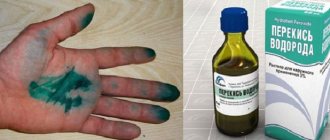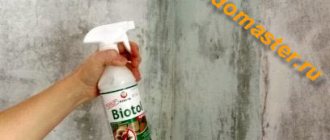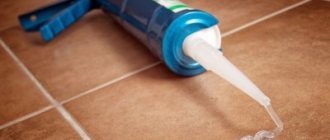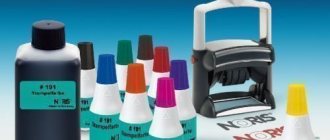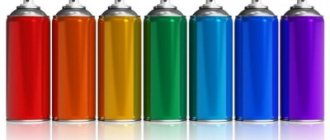When time doesn't heal
The higher quality the hair dye, the more difficult it is to remove stains from it on fabrics and other materials.
This is exactly how you can characterize the situation with hair dye stains on textiles, hard surfaces or paper: even from light dye, the mark will not disappear by itself. Moreover, over time, the coloring pigments will be so absorbed that it will be very difficult to get rid of them, and if we are talking about dark shades of the coloring agent, then it will be completely impossible . We also note the fact that fashionable beauties try to choose the most durable paint, and this significantly reduces the chances of success in the operation to remove contamination. From the above it follows that simple washing by hand or in a machine is not enough. We'll have to look for something more effective. To do this, we will group stain removal methods according to the type of impact on contamination.
Features of removing different types of paintwork
In order for the wall cleaning process to be as productive as possible, it is necessary to take into account the type of coating. Removing different types of paint:
| Paint type | The best means |
| Acrylic | White spirit, acetone, xylene |
| Water-based | Ax and warm water. The walls need to be wetted generously. |
| Oily | Solvent 649, 650, alcohol compositions, mechanical removal methods |
| Enamel | Solvent 647 |
| Drying oil | Organic solvents, turpentine |
Disinfection
Many models of acrylic bathtubs have an antibacterial coating, so they do not suffer from mold and mildew. But prevention will not be superfluous, especially if there are small children.
Important! For disinfection, you can only use special substances for acrylic that are safe for coating.
Regardless of the product, the disinfection process is as follows:
- Pour warm water into the bath.
- Add the required amount of disinfectant.
- Leave for 15 minutes, then drain.
- Wash off any remaining product.
- Wipe dry.
The frequency of such treatment depends on the type of product chosen, but it is recommended to carry it out at least 1-2 times a year.
Reviews
The problem of getting rid of tonic as quickly as possible worries all girls who did not like the result of coloring. Blondes who have overexposed the tinting agent and, as a result, become the owners of purple or green strands, especially suffer from this. To neutralize the color, the fair sex is recommended to use gentle products so as not to harm the hair.
Girls say masks made from colorless clay, kefir and raw eggs are effective. The composition is kept on the strands for about two hours, after which it is washed off with shampoo. The method is suitable even for red and ginger shades of tonic. A risky method is to use cleaning products (eg Dish Drops, Fairy). They can even remove blue dye, but can greatly dry out your hair and make it lifeless.
To avoid undesirable consequences, girls agree that it is better to initially buy only high-quality, more expensive tint products that do not contain synthetic elements or components of animal origin. You should also be careful with domestically produced balms, since they do not meet European and world quality standards.
Source of the article: https://zasor-nn-zasor.ru/otmyt-toniku-vanny/
Is it possible?
Rinse off hair dye
Many representatives of the fair sex dye their hair at home. The inevitable question arises - where can I remove the dye from my hair? Of course, the most convenient way is to use the bathroom. But what if its snow-white coating turns the same color as your hair, or spots or streaks appear?
If the bathtub is new and its coating does not have cracks or scratches, nothing bad will happen; the paint will not have time to stick to the coating and will simply be washed off with water down the drain. The only thing is to make sure that the pressure at the time of rinsing is high, so that the pigment does not linger on the surface for a long time. After completing the procedure, you just need to rinse the bath well with warm water, carefully inspecting the surface for paint smudges.
But if the coating of the font is damaged and has roughness and scratches, the paint will get into the surface defects and remain there.
Therefore, it is very important to properly care for your plumbing and use high-quality detergents so as not to bring it to this state. But if you do scratch the acrylic, it’s okay, it can be easily restored .
Take salt and turpentine baths
After work, it is very useful to relax and take a hot bath with salt or turpentine. But housewives have a question: will acrylic withstand such a test.
The answer is simple - it will endure! But subject to certain conditions. In general, a solution of sea or any other salt does not chemically interact with such a coating, so you can safely use it for evening relaxation. There is one thing though! The surface can be damaged mechanically. Therefore, it is safer to dissolve the salt in some other container, and only then pour it into the font.
As for turpentine, it is an oil. It will also not damage the coating in any way. But to be on the safe side, it’s better to add it to an already filled bath. And after the procedure, rinse thoroughly with water.
Wash the animals
Many owners are accustomed to bathing their pets in the bathtub after a walk. But is it worth doing? The acrylic surface does not like mechanical influences very much, and if you regularly wash a dog or cat in the bath, they will definitely leave scratches with their claws . Therefore, it is better not to do this. You can buy a large plastic basin for such procedures.
Powder wash
The acrylic bathtub is washable . The only thing worth paying attention to is that the water is no more than 50 ºС and the metal parts of the clothes being washed do not damage the surface, so you do not need to rinse the jackets too zealously - the zippers will scratch the coating.
But you can only wash it in regular baths; you absolutely cannot do this in hydromassage baths ! There is a danger of damaging the injectors.
Store in frost
Bathroom care rules
To remove traces of various substances from the surface of the bathtub, remove plaque and rust, it is first recommended to use effective home remedies.
They differ from specialty chemicals in that they work gently. The coating will remain intact even after repeated use of substances prepared based on folk recipes.
However, this method also has disadvantages, such as low efficiency. With their help, you can wipe off fresh stains and remove light dirt. Moreover, increasing the dose of active components will not provide the required result.
Lemon acid
This product is moderately aggressive. The acid helps remove traces of rusty water. It will not remove complex stains, but it can significantly lighten the coating. It is necessary to use the acid correctly, which will increase its level of effectiveness. They use methods based on exposure to a concentrated solution and water containing a small amount of the substance. They are used in different cases. Algorithm of actions:
- Prepare a concentrated solution. To do this, stir 1 packet of acetic acid in 1 glass of water (250 ml). All surfaces of the plumbing fixture bowl are treated with the substance, but it is best to clean those areas where the yellow coating is more visible. Then the bath is left in this state for half an hour. During this time, the acid will penetrate the surface layer of the coating and destroy the contaminants. After half an hour, the product must be washed off the walls of the bowl.
- Use of a low concentration solution. Mix citric acid with water, for which use the above recipe. Then fill the bath with water to the hole at the top of the bowl (overflow) or to the level where a yellow coating has formed. It is necessary to pour the solution into water. The substance is left in the bath for 3 hours. If the stains are complex, the dark coating may lighten slightly. When fresh stains need to be removed, the cleaner helps restore the whiteness of the plumbing fixtures. After 3 hours, the solution is washed off with water, after emptying the bath.
Citric acid removes complex stains.
After applying the acid, you can rub the stains with baking soda. This method is chosen taking into account the type of coating of the bowl, since the abrasive is not suitable for all facing materials - it has a damaging effect.
Soda and vinegar
This combination is used only if individual substances do not provide the desired result. Subtleties of using soda:
- Prepare the slurry: mix soda with water. The number of components is arbitrary; it is important to obtain a thick substance at the output, which is characterized by a high viscosity index, which will not allow the substance to spread.
- The gruel is applied to all surfaces of the bowl of the plumbing fixture. If the coating material is insensitive to abrasive, rub the bowl with soda using a soft sponge. In other cases, soda does not need to be rubbed into surfaces so as not to damage the enamel.
- After 1 hour, you can remove the layer of slurry with a stream of water. Alternatively, you need to wait until the mixture dries, after which you can remove the dry powder. In such cases, you should not use hot water to clean the bowl.
A combination of baking soda and vinegar helps remove tough stains.
Clean the bathtub until it is snow-white; soda ash will help remove black deposits. The method of using such a powder is similar to the previously discussed option.
It is necessary to mix soda ash and baking soda, the ratio of components is 1:1. Then add water, but in a minimal amount, until a paste is obtained. It is necessary to wear gloves when working with soda ash. Apply the product to the surface of the bowl and leave for half an hour.
At this time, a vinegar solution is prepared. You need to mix 0.5 cups of essence and the same amount of bleach. The solution is applied to the walls of the bowl directly on top of the soda slurry. Leave the bath in this form for 30-40 minutes.
At the end of this period of time, you need to rub difficult stains on the surface of the bowl with a medium-hard sponge. Then the substance is washed off with water. Soda ash can remove the toughest stains from your bathtub.
Removing rust
First, consider methods with ammonia, salt, and vinegar. These substances will help you easily get rid of light stains. They are used separately. It is enough to rub the stain for several minutes using ammonia or salt and vinegar. Lemon juice is used in the same way. However, the effectiveness of this product is low, so it is recommended to use it to regularly care for the bath bowl, removing light stains.
To remove rust, you need to use vinegar and bleach.
Another effective method against rust is to gradually apply a mixture of soda ash and baking soda, as well as a combination of vinegar and bleach. It is distinguished by its universal action and comparative ease of use. Another method is also used:
- The inner walls of the bowl are treated with fine-grained moistened salt.
- A soft sponge must be moistened with turpentine, after which all surfaces of the bath are wiped. You need to work with gloves.
- The product must be washed off with water, and dishwashing liquid is added to enhance the effect.
Mix baking soda and soda ash in equal parts. The powder needs to be moistened. Then the resulting slurry is applied to the walls of the bowl. After 30 minutes, the substance is removed from surfaces using a stream of water. You need to moisten paper napkins with vinegar and lay them out along the bottom of the bath. If required, the walls of the plumbing fixture are also covered. The substance must act for 5 hours. Then it is washed off.
There are a large number of options for such products, so it becomes difficult to choose the most suitable one. Before purchasing, study the information from the manufacturer on the label. This makes it possible to select a substance in accordance with the type of material from which the bathtub and lining are made.
Domestos is perfect for cleaning bathtubs with chemicals.
Instructions for use are often standard: the product is applied to the walls of the bowl and left for a certain period (depending on the brand). Upon completion, the substance is washed off with water. If you leave the product on the walls of the bowl, the lining may be damaged. They use products from different brands:
When it is planned to use an aggressive substance, the properties of the material from which the plumbing fixture is made are studied. For example, a cast iron fixture cannot withstand the effects of acid and abrasives. However, acetic and citric acids can be used, which is due to their much milder effect compared to ready-made products. Ammonia is also used.
Acrylic
To clean such a bowl, you cannot use any acids or alkalis. This may damage the coating. Do not use alcohol- or chlorine-containing solutions. Lime is removed from the surface of the bath using washing powder diluted with water. It is permissible to use heated vinegar and salt. You can use turpentine. It is combined with fine-grained salt.
Turpentine is one of the acceptable cleaning agents for acrylic bathtubs.
Enameled
Do not use abrasive substances to clean this device. Allowed means:
- ammonia;
- hydrogen peroxide;
- vinegar;
- lemon juice;
- baking soda.
An enamel bath can be cleaned with lemon juice.
It is permissible to treat the walls with fine-grained salt; a thick slurry is prepared based on this component. A good result is provided by lemon juice in combination with ammonia. Despite the aggressive effects, it is permissible to use a mixture of soda ash and baking soda. Mustard powder is also used to clean enamel walls.
You need to take 2 tips as a basis:
- Every day, wash the walls of the bowl with soapy water; instead, use liquid soap; use a sponge for application;
- at the end of the day, and best of all, after each use, the bath should be wiped dry, this will prevent the formation of limescale and the appearance of yellowness.
If colored stains appear (from hair dye, brilliant green, etc.), they must be removed immediately. If you leave complex contaminants on the surface of the bowl and continue to use it, the substance will penetrate deep into the lining structure. As a result, it will be difficult to remove such a stain.
The tonic has a liquid consistency, and when painting, it can flow from the hair, staining things and plumbing fixtures. If you are careless, the dye can even end up on the walls or floor, and it will not be so easy to remove it.
If the tint does end up on the fabric, the stains should be removed as soon as possible. It is necessary to wet the stained area and apply a mixture of washing powder and soda on it and leave it for 15 minutes. Afterwards the items need to be washed. If necessary, the procedure is repeated until a successful result is achieved.
When a stain on clothing is not immediately noticed, the stained area is sprayed with hairspray, and then washed with powder. The next method is to dilute the vinegar with water and apply it to things, then soak them in a solution with ammonia. An industrial stain remover will also help get rid of the toner. To get rid of the dye, use kerosene or gasoline. They are applied to the fabric using a cotton swab and the clothes are washed again.
After painting, the tonic may remain on the bathtub or sink. To remove the dye, use bleach. It is poured onto a damp cloth and left for some time until the stains come off, repeating the action if necessary.
Store-bought cleaning products can also help deal with stains. The main condition is that they do not drain from the walls of the bathroom, otherwise the effect will be minimal. “Aist Sanoks”, “Adrilan”, “Sarma”, “Toilet duckling” cope well with pollution. First of all, they help for cast iron surfaces. It is much more difficult to wash tonic from acrylic baths; to do this, you must repeat these procedures several times.
How to wash it out of your hair?
Before painting your head, the effect of the tint is checked on a separate strand: this way you can understand what shade you will get in the end. After this, the product is applied to the entire head. Neglecting this stage can result in unexpected results. It is not always possible to clearly imagine how one or another shade will look on the hair.
In addition, it is impossible to predict what reaction the dye will give: a girl may end up with green or purple hair.
When a lady is not satisfied with the result of dyeing, there is an urgent need to return her natural hair color. This can be done at home using natural remedies. You will have to turn to professionals if none of the methods help. Further steps may make the situation worse and damage your hair.
Quick removal of tonic:
- Shampoo. Frequently washing your hair will speed up the removal of tonic from your strands. Immediately after dyeing, you can soap your curls several times; to improve the effect, it is recommended to use products for oily hair or anti-dandruff products with strong washing agents. Regular laundry soap will also help, but it will make the strands stiffer and drier.
- Chamomile decoction, soda solution or lemon juice. The composition is mixed with shampoo and applied to the head. Alternatively, the solution is applied separately. After the procedure, be sure to use conditioner or balm so as not to dry out your hair.
- Burr oil . It is used both independently and as part of masks. It is enough to apply the oil at night and wash it off in the morning with regular shampoo. You can get rid of unwanted color after 2-3 procedures, and your hair will acquire a healthy shine, since the mask has a healing effect.
- Dairy products. You can neutralize the color with kefir or yogurt. You need to apply them to your hair and leave it overnight, then rinse it off. Fermented milk drinks are also used to prepare washes. To do this, take 800 ml of kefir and mix with vegetable oil, soda and salt in equal parts (1 tablespoon).
- Honey and lemon mask. To prepare the wash, take 4 tablespoons of honey and the juice of a medium-sized fruit (30 grams). The solution is heated and left on the hair for 2-2.5 hours. Another option is not to squeeze the juice, but to grind the lemon into a paste. In this case, the composition is kept on the hair for no more than an hour, so as not to dry out the strands.
How can you quickly wash it off your skin at home?
When dyeing your hair with tonic, it is better to use gloves and long sleeves. This way you can avoid getting the product on your skin. However, even neat girls can get dirty. The dye can get not only on your hands, but also on your face and remain on your scalp. After a few days, the product will be washed off without the use of special recipes, but there is a need to remove it immediately.
Ways to get rid of toner:
- If the tint gets on the scalp, just rinse it with shampoo. If you mix it with baking soda, you can remove more stubborn stains. In this case, you need to gently rub the solution in and then rinse it off.
- The toner can be washed off your hands and face using alcohol-containing products or vegetable oil. Apply them to cotton wool or a cotton pad and rub the area of skin. To remove the product from your face, you can use makeup remover milk, which will be gentle and will not dry out your skin.
- A mask with burdock oil will help remove dye from nails. To do this, apply the product and hold for 15-20 minutes, wrapping your hands in a towel.
- When the tonic is all over the body, a bath with half a liter of milk, orange oil and the juice of three lemons will help. Raster will not only cleanse the skin, but also whiten it, give it shine and radiance.
- Toothpaste is another tool that will help remove stains. You need to apply it in a thin layer on your face and wash it off after a while. To achieve a more lasting effect, the paste is mixed with lemon juice, oil and soda in equal proportions.
Important Tips
Tips from professional repairmen:
- When working with chemicals, you must use personal protective equipment: gloves, goggles and a respirator.
- When using electrical appliances, such as an angle grinder, in the bathroom, do not allow the tools to come into contact with water.
- To ventilate the room, do not close the door to the bathroom.
- When removing paint from walls, you need to protect the flooring and plumbing from possible contamination. To do this, they are covered with polyethylene or unnecessary fabric.
If the paint in some areas is difficult to clean off, then you can refuse to completely remove it. Such a coating will not become an obstacle to further repair work.
The final touch: how to clean a bathroom after renovation
The renovation is completed, a lot of effort and finances have been put into purchasing building materials and carrying out technical processes to improve the bathroom. Now the font looks modern and attractive. The final touch remains - a thorough cleaning and washing of the bathroom. How to clean a bathroom after renovation? We will try to understand the economic issue step by step in order to preserve its beauty and presentability.
How to clean a bathroom after renovation
The bathroom after renovation looks unattractive: a pile of construction debris, dust and residues of various sealants, glue on the surface of the tiles and plumbing products. We suggest using expert advice and cleaning your bathroom easily and simply.
Advantages and disadvantages
Acrylic polymer was originally used in dentistry. But thanks to its strength, low thermal conductivity and antibacterial properties, it soon began to be successfully used in a wide variety of industries.
Among the positive qualities of acrylic plumbing fixtures:
- Lightness and strength. The standard model weighs no more than 30 kg, which is significantly less than the cast iron model. At the same time, they are durable, which is facilitated by the rigid frame used in the design. Maximum weight (load) – 400-500 kg.
- Variability of models. Sizes, colors, shapes - in terms of the number of proposals for these parameters, acrylic bathtubs deservedly take first place.
- Low thermal conductivity. The model with acrylic coating retains heat well and is pleasant to the touch.
- Appearance. If such a bathtub is properly and regularly cared for, it will retain its original color and glossy shine for a long time.
- Useful additional features. For example, you can choose a hydromassage bath.
- Noise insulation. When faced with an acrylic coating, water does not make much noise, as is the case with a steel and cast iron bathtub.
- Easy to install. The metal frame is easy to install and adjust.
Cons of acrylic bathtubs:
- Fragility, flexibility. In such a bathroom, you should not drop heavy objects, nor place iron buckets, basins, etc., to avoid chips and scratches. Also, improper installation of the frame will lead to curvature of the bathtub over time.
- Temperature instability. This is typical for budget models that are coated with a thin layer of polymer.
- At a fairly high cost, they have a limited lifespan.
- And the main disadvantage: when using conventional chemicals for plumbing fixtures and cleaning powders, the acrylic coating becomes dull, scratched and clogged with dirt. Therefore, special household chemicals are intended for acrylic.
Main mistakes
In order not to harm your own health and not damage the wall, you need to familiarize yourself with the most common mistakes that inexperienced repairmen make :
Working with caustic substances without a respirator and gloves.
The bathroom is a small room with poor ventilation. In it, caustic vapors spread very quickly. Inhaling them can cause serious poisoning.- Excessive pressure on the wall. If you overdo it with mechanical methods of removing paint, this can lead to destruction of the concrete base. It is difficult to straighten a heavily damaged wall.
- Removing paint from the area of electrical switches without turning them off. The room must be de-energized during work. One careless movement is enough to get an electric shock.
It is better to remove the bathtub and other plumbing fixtures from the room during the work.
One-time tint removers
Enameled
Even if the product is used as intended, various nuances may arise during the work process. In addition, the type of pollution is taken into account. Some substances have a stronger effect on a number of materials and, conversely, are almost ineffective when trying to influence other compounds.
A combination of citric acid and hydrogen peroxide will help remove traces of potassium permanganate.
These substances strongly stain any surface. To remove traces of potassium permanganate, use a combination of citric acid (or fresh lemon juice) and hydrogen peroxide.
The brilliant green solution is cleaned from surfaces using alcohol. However, this option is ineffective in cases where an acrylic bowl is installed.
Citric acid helps get rid of the effects of dust. Contaminants are removed with water, then the walls of the bowl are treated. Paint can be removed with solvents, but first you need to do a test to check how such a substance will affect the bathtub coating.
First, remove most of the silicone. Residues are removed using salt-based products. Considering that abrasive is used, this option is not suitable for all types of plumbing fixtures. Special products from the chemical industry are more effective.
Methods for removing sealant in the bathroom.
The best option is soda ash. This substance penetrates deep into the coating, fills microcracks, due to which the walls of the bowl brighten. You can use a method using baking soda, soda ash and bleach with vinegar.
The methods listed above are designed to remove color in several procedures. There are also accelerated methods that allow you to wash the product in one go. They are even suitable for washing away bright shades such as blue, wild plum, black, purple and red. Regular baking soda has the most aggressive effect. It is used separately or as a mask.
Soda-based toner removers:
- 5 tablespoons of soda are dissolved in 1 liter of water and the curls are moistened with the solution;
- to enhance the effect, apply the solution to the strands and wrap the head with film and a towel, hold for 40 minutes;
- 100 g of soda are mixed with 1 tablespoon of salt and 150 g of warm water; The mixture is rubbed into dry hair and left for an hour, then washed off with shampoo and chamomile decoction.
Extreme methods include the use of 70% alcohol. It is strictly prohibited to use it in its pure form, otherwise the girl risks getting a chemical burn. Alcohol is mixed with vegetable oil in a 1:1 ratio and applied to the hair, avoiding the root zone.
You can remove tonic from your hair using professional removers. For these purposes, such products as Estel Color Off, Hair Light, and “Retonika” are used. The use of the products is based on a chemical reaction that neutralizes the effect of the dye. The remover penetrates the hair structure and breaks the bonds between molecules, causing the tonic to come off the strands. It should be borne in mind that this method dries out the hair greatly, so its use is often not recommended.
Blue and purple tones are the most difficult to remove, especially if they were applied to light strands. To neutralize the product, take an oxygen agent and keep it on the hair for 25 minutes. Black cosmetic clay is also suitable for combating stubborn colors.
It is not recommended to use it on dry hair, so as not to make it even more lifeless. To create a mask, clay powder is diluted with warm water to the consistency of thick sour cream and applied to the strands for 50-60 minutes.



